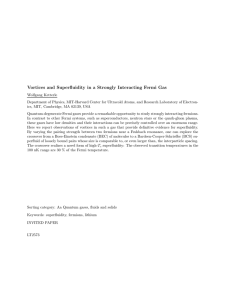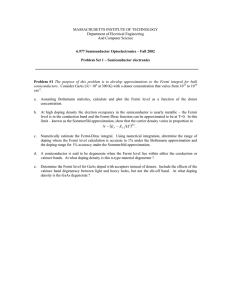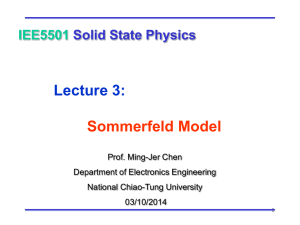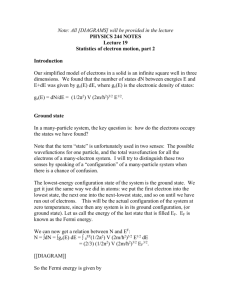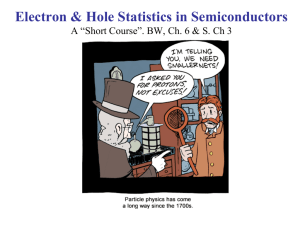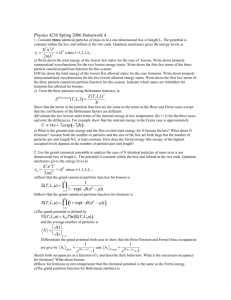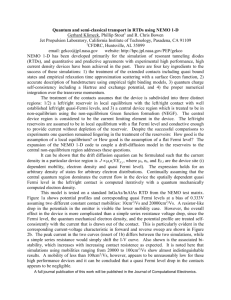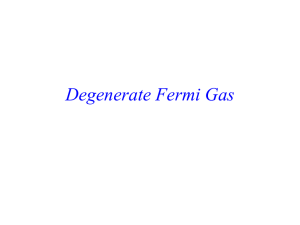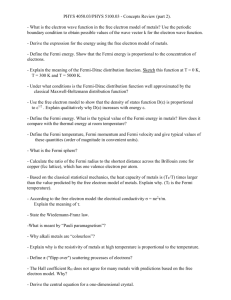Lecture 7
advertisement
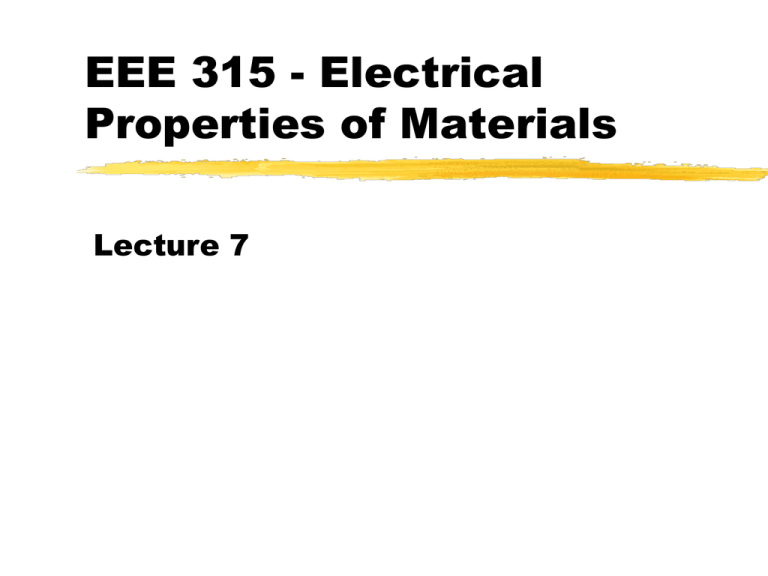
EEE 315 - Electrical Properties of Materials Lecture 7 Carrier distribution functions Of particular interest is the probability density function of electrons, called the Fermi function. Maxwell-Boltzmann distribution is also provided. Fermi-Dirac distribution function The Fermi-Dirac distribution function, also called Fermi function, provides the probability of occupancy of energy levels by Fermions. Fermions are half-integer spin particles, which obey the Pauli exclusion principle. The Pauli exclusion principle postulates that only one Fermion can occupy a single quantum state. Fermi level Density of states tells us how many states exist at a given energy E. The Fermi function f(E) specifies how many of the existing states at the energy E will be filled with electrons. The function f(E) specifies, under equilibrium conditions, the probability that an available state at an energy E will be occupied by an electron. It is a probability distribution function. EF = Fermi energy or Fermi level k = Boltzmann constant = 1.38 1023 J/K = 8.6 105 eV/K T = absolute temperature in K Fermi-Dirac distribution: Consider T 0 K For E > EF : f ( E EF ) 1 0 1 exp () For E < EF : f ( E EF ) 1 1 1 exp () E EF 0 1 f(E) 5 Fermi-Dirac distribution: Consider T > 0 K If E = EF then f(EF) = ½ E EF 3kT If then E EF exp 1 kT Thus the following approximation is valid: ( E EF ) f ( E ) exp kT i.e., most states at energies 3kT above EF are empty. If E EF 3kT then E EF exp 1 kT E EF f ( E ) 1 exp kT So, 1f(E) = Probability that a state is empty, decays to zero. Thus the following approximation is valid: So, most states will be filled. kT (at 300 K) = 0.025eV, Eg(Si) = 1.1eV, so 3kT is very small in comparison. 6 Temperature dependence of Fermi-Dirac distribution 7 1.0 0K 50 K 100 K 150 K 200 K 250 K 300 K 350 K 400 K 0.8 F(E) 0.6 0.4 0.2 0.0 -0.20 -0.15 -0.10 -0.05 0.00 E-EF 0.05 0.10 0.15 0.20 8 The Maxwell Boltzmann distribution The Maxwell Boltzmann applies to noninteracting particles, which can be distinguished from each other. This distribution function is also called the classical distribution function since it provides the probability of occupancy for non-interacting particles at low densities. Atoms in an ideal gas form a typical example of such particles. The Maxwell-Boltzmann distribution function is given by: A plot of the three distribution functions, the Fermi-Dirac distribution, the MaxwellBoltzmann distribution and the BoseEinstein distribution is shown in Figure below. Probability of occupancy versus energy of the Fermi-Dirac, the Bose-Einstein and the Maxwell-Boltzmann distribution. Fermi energy and average energy of electrons The free fermions that occupy the lowest energy states form a sphere in momentum space. The surface of this sphere is the Fermi surface. The total energy of a Fermi sphere of fermions is given by Where, 13-Apr-15 12
